Warm up this winter with Oma's newest cookbooks - available on Amazon >>
- Home
- Famous Architecture in Germany
Famous Architecture in Germany: Iconic Landmarks and Buildings
By: Eran Fulson / Traveler, writer, and curious observer of all things German.
Within the German borders are more than a millennium of architectural gems. One doesn’t have to travel far in any direction to see some of the most famous architecture in Germany. From Roman to Postmodern, historic landmarks throughout the country embody every style in-between.

More prominently, the 13th century saw a rise in the popularity of the Gothic style, and a vast swathe of the most famous landmarks were constructed.
Major German cities typically offer a fascinating array of architectural styles, while small towns are often like opening a time capsule.
Our tours over the years have taken us to many prominent displays of famous architecture in Germany.
If you're looking for bucket-list ideas or some holiday inspiration, check out our list of 13 must-see locations as a good place to start.
On this page:
Worth the Wait
It would be fittingly appropriate to begin each section with “Presenting one of Germany’s most famous landmarks…”
So, presenting one of Germany’s most famous architecture displays: the Cologne Cathedral. A penultimate example of famous architecture in Germany, and the tallest twin-spired church in the world.
Top tip
The South Tower has a viewing platform rising up to around 328 feet. With panoramic views over Cologne, it’s worth the 533 steps to the top.
Master Mason Gerhard of Reil was about six hundred years shy of seeing the completion of his masterpiece. The cornerstone was laid by Archbishop Konrad von Hochstaden in 1248, yet the cathedral was not completed until 1880.
It was finished as it began, a symbol of German artistic and architectural prowess, and is believed to have been the tallest building in the world at the time.
Its architecture was intended to challenge the great French churches, and, while obviously biased, I’d say good things are worth waiting for.
My own humble opinions aside, the Cologne Cathedral was listed as a UNESCO World Heritage Site in 1996.
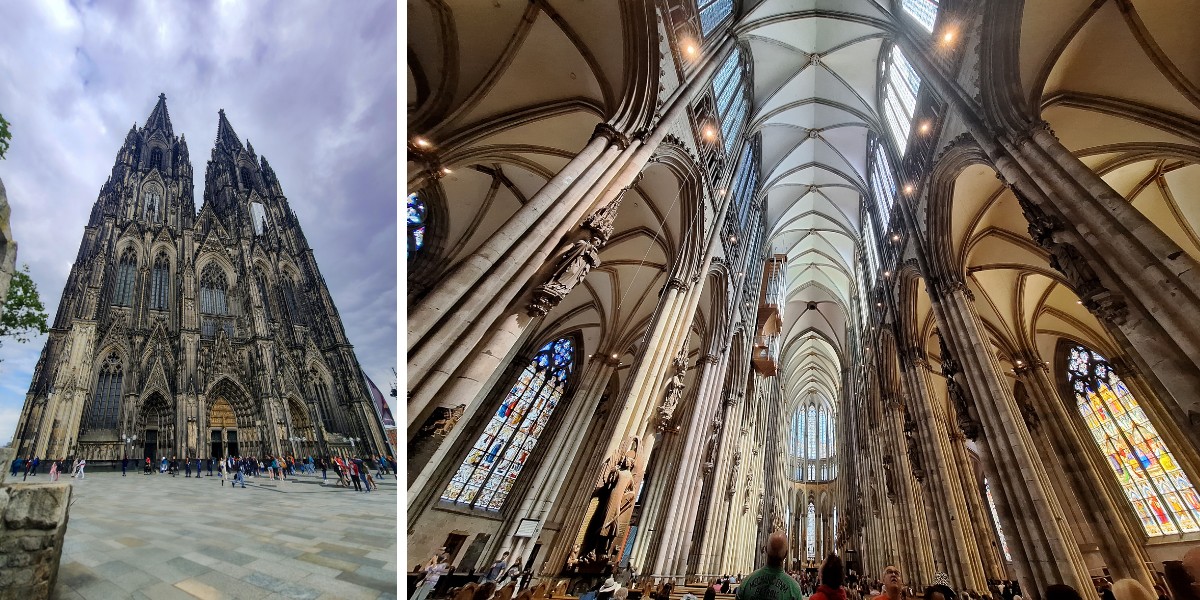 Our tours often include the cathedral, and we're definitely not complaining.
Our tours often include the cathedral, and we're definitely not complaining.With Gated Breath
Presenting one of Germany’s most symbolic landmarks (bet you thought I was going to say famous): the Brandenburg Gate.
Once a city gate to Berlin, the Brandenburg Gate was commissioned by King Frederick William II of Prussia in 1788. Three years later, after its completion, it still stands as one of Berlin’s most famous landmarks.
Constructed in an 18th-century neoclassical style, the monument is situated in the center of Berlin on Pariser Platz (Parisian Square).
During the Cold War, its location in a restricted area between East and West Germany meant that, after the fall of the Berlin Wall, the gate became a national symbol of German peace and unity.
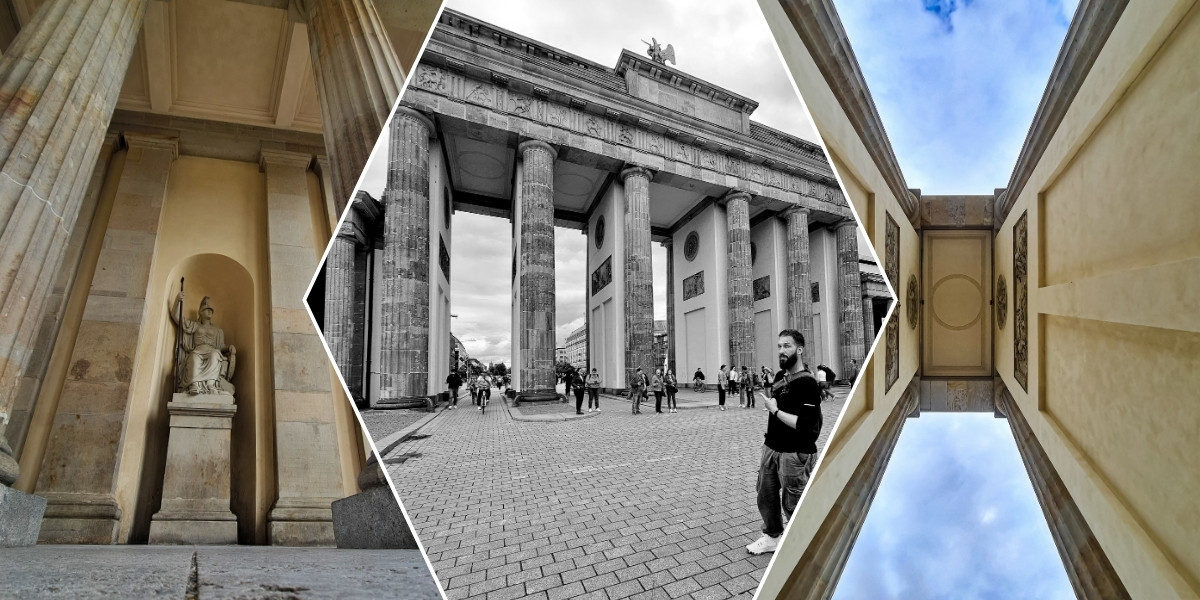 Easily one of Berlin's most photographed landmarks.
Easily one of Berlin's most photographed landmarks.Castle of Dreams
It's perhaps the most recognizable castle in the world, and a feather in the cap among famous architecture in Germany. You may not know its name (it's a bit of a mouthful), but its spires piercing the Schwangau landscape are instantly identifiable.
High up in the Bavarian Alps, Neuschwanstein Castle is the embodiment of a fantasy world colliding with reality and not conceding an inch.
Even its placement among the clouds on a rock ledge overlooking the Pöllat Gorge lends itself to the fantastical. King Ludwig II (Mad King Ludwig) ordered the construction of the fairy tale castle in 1868, which is still technically unfinished.
Spending much of his childhood in Hohenschwangau Castle, Ludwig II envisioned a “New Hohenschwangau Castle” more in tune with his fairy tale ideology of the monarchy.
Breaking from the typical Neo-Gothic architecture, Neuschwanstein Castle was given a Romanesque makeover. Paintings by Christian Jank were translated into architectural drawings by Eduard Riedel, and the rest is history.
The castle is more symbolic than it is a fortress, as its original intention was to be a castle of paradox.
During a time when castles were no longer needed for military advantage, Neuschwanstein was still constructed as one, albeit with a heavily romanticized medieval design.
The paradox comes into play with all the mod-cons available at the time.
While it may not look like it from the outside, Neuschwanstein was ahead of its time, even by modern amenity standards. It’s equipped with running water, flush toilets, forced-air central heating, telephone lines, and a three-story elevator from the kitchen to the dining room.
The castle also served as inspiration for Disneyland’s Sleeping Beauty Castle.
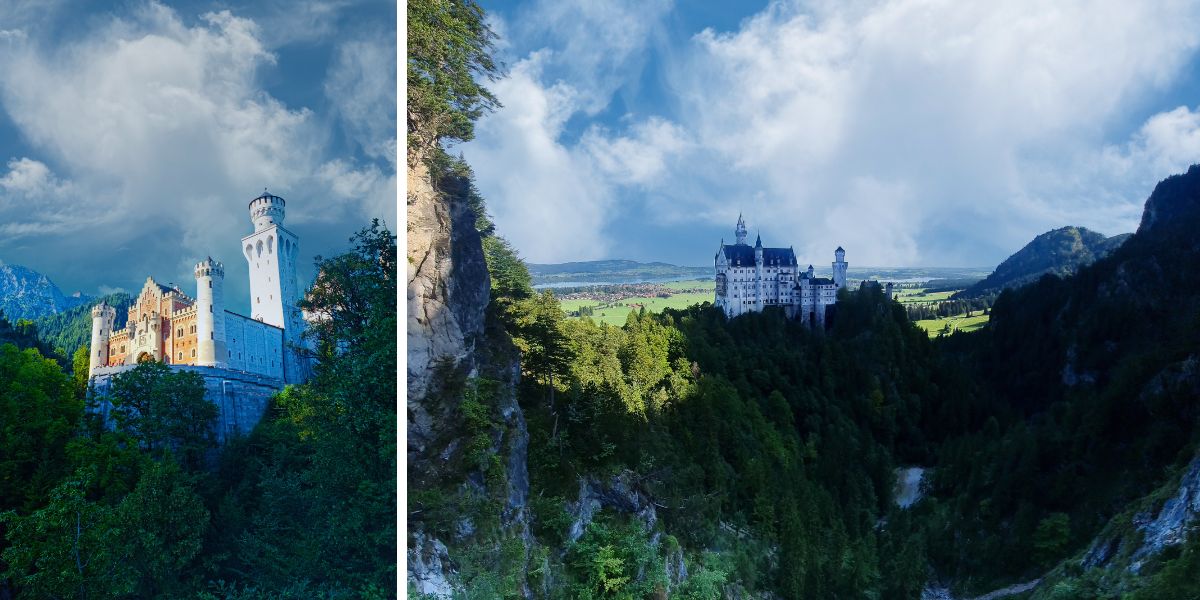 Bavaria's most famous castle.
Bavaria's most famous castle.Political Liberty
The history of the Reichstag Building in Berlin is one of the more poignant visual displays of famous architecture in Germany over the past century.
Home to the Bundestag (Federal Assembly), Germany’s lower house of the national legislature, it’s located near the south bank of the Spree River and the northern end of Ebertstrasse.
Architect Paul Wallot designed the building in 1884 and opened for business in 1894 as the Reichstag (German Parliament) for the German Empire.
It later became the parliament of the Weimar Republic in 1918. One month after Adolf Hitler rose to power, on February 27, 1933, the Reichstag suffered a devastating fire.
top tip
The glass dome’s spiral staircase is open to the public, as is the outdoor roof terrace surrounding it. Advance booking is required.
The cause of the fire was alleged to have been instigated by the newly formed Nazi party in order to divide public opinion and assume emergency powers. Still in ruins, the Reichstag suffered further damage during World War II bombing raids.
The building lay disused until the 1970s, when a partial restoration saw the Reichstag turned into a museum of German history.
After the Cold War ended with the reunification of East and West Germany in 1990, a full renovation and restoration were undertaken.
Restorations included repairs to its infamous glass dome, with an added spiral staircase going to the top of the dome. The Bundestag officially resumed sessions at the Reichstag on September 7, 1999.
In an effort to keep up with the times, the Reichstag was updated to improve its carbon footprint. Biofuel generators provide a significant portion of the building’s energy needs, along with a sizeable solar array on its roof, further increasing its energy independence.
Coupled with natural light coming in from the iconic glass dome, the Reichstag has become a leading symbol of national energy efficiency.
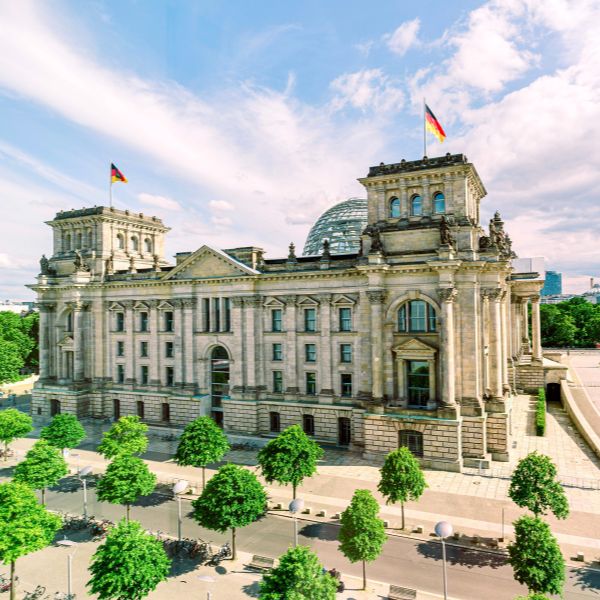
Subtlety Can Wait
Among the famous architecture in Germany, the Berlin Cathedral takes a rather big slice of the cake. The cathedral’s iconic central dome is nearly impossible to miss along the banks of the Spree River.
Located on the UNESCO World Heritage Site, Museum Island, the current iteration comes after Emperor Wilhelm II replaced the original cathedral (1465) with his answer to St. Peter’s Basilica in Rome. Construction began in 1894 and was completed in 1905.
Like many other historical landmarks in Germany, World War II saw extensive devastation throughout Berlin. The cathedral was no exception after a liquid firebomb destroyed the main nave and Hohenzollern crypt.
Reconstruction took place over thirty years and was completed in 2002.
The Berlin Cathedral’s architecture draws from Baroque-influenced Italian High Renaissance and has become a national monument of elegance. Intricate carvings fill every corner of the cathedral with subtlety given no quarter.
While you can explore the cathedral on your own, given the history and internal decor, a guided tour is highly recommended.
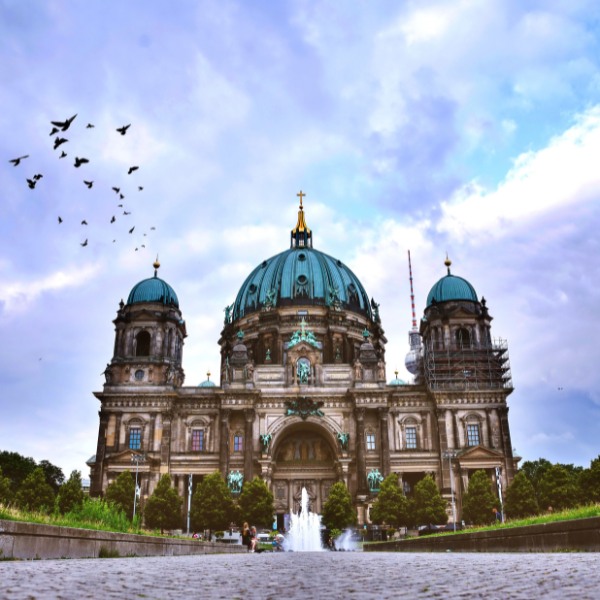
Treasure Island
The heart of Berlin features one of the most important museum complexes in Europe, Museum Island. Six historic structures make up the cultural epicenter on a literal island in the middle of the city.
One of them is the aforementioned Berlin Cathedral, while the others are five world-famous museums built during the time of Prussian rule in the 19th century.
Included on the Museumsinsel (Museum Island) are the Altes Museum (Old Museum), the Neues Museum (New Museum), the Alte Nationalgalarie (Old National Gallery), the Bode Museum, and the Pergamon Museum.
Encompassing Classicism, Baroque, and Renaissance architectural styles, the exterior impression of the complex is nearly as captivating as the internal exhibits.
Listed as a UNESCO World Heritage Site, the twenty-one-acre island is a must-visit destination for anyone traveling to Berlin.
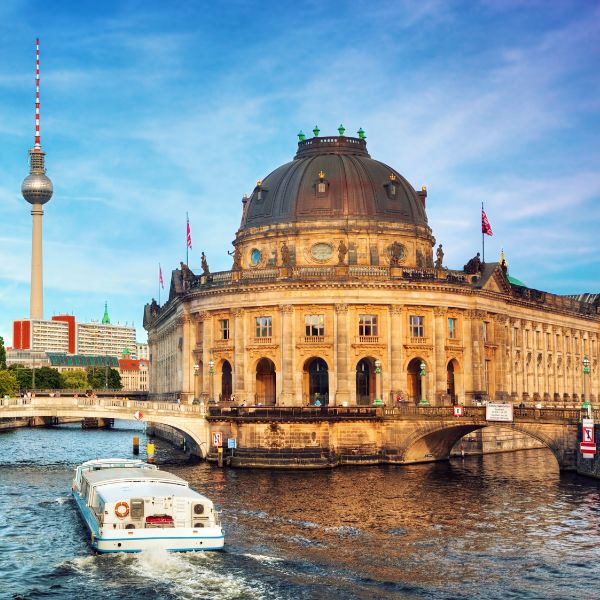 View of Bode Museum with the ever-noticable TV Tower in the background.
View of Bode Museum with the ever-noticable TV Tower in the background.The Emperor’s New Digs
Situated on the remains of an ancient Roman thermal complex, the Carolingian Church of St. Mary (Aachen Cathedral) is one of the oldest cathedrals in Europe.
Its history dates back to 793, when Emperor Charlemagne ordered the construction in Aachen, his favorite retreat in Western Germany.
Sadly, Charlemagne didn’t have long to enjoy it, as he was buried there in 814, only a year after it was finished. Its octagonal dome stands over one hundred feet high, and the Palatine Chapel is a masterpiece of Carolingian architecture.
The cathedral was spared the devastation of World War II and given UNESCO World Heritage Site status in 1978. The site is also home to an exceptional collection of medieval art objects ranging from the Late Classical, Ottoman, and Staufian periods.
And because opulence is never in short supply, the Aachen Cathedral also boasts more than 26,000 square feet of mosaics and near-equal square footage of marble paneling throughout.
Somewhat less opulent is the imperial throne in the western gallery of the Palatine Chapel. Thought to be Charlemagne’s throne, though there is no definitive proof, the imperial throne was used between 936 and 1351 to legitimize the crowning of thirty Roman-German kings during that time.
Legend has it that the inconspicuous marble slabs used for the throne came from the Church of the Holy Sepulcher in Jerusalem.
While no scientific evidence has been yet found, who doesn't love a bit of speculation?
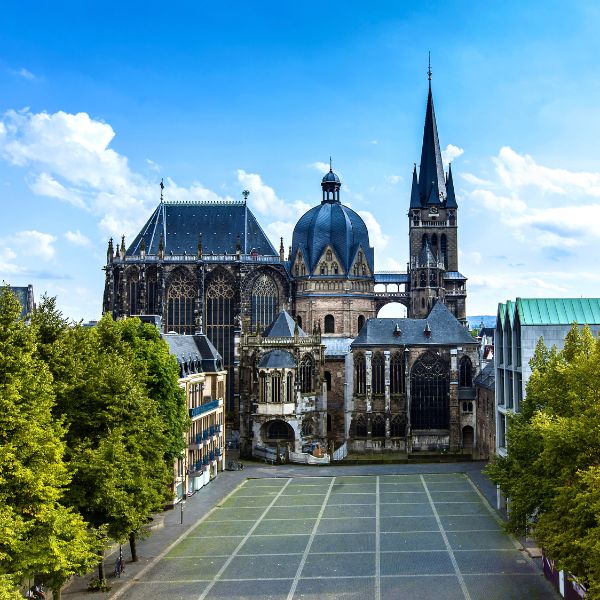
East Side Story
Though much of Berlin has been rebuilt in the years that followed the devastation of WWII, a few effigies remain. It may not seem fit to stand alongside other comparable famous architecture in Germany, but it's history is on par.
Despite a lack of typical Baroque or Renaissance architecture, a 0.8-mile stretch of the former Berlin Wall has become a national monument in its own right.
Few sections of the Berlin Wall remain; however, this stretch of wall is now the longest open-air gallery in the world - known as the East Side Gallery. What was once a symbol of division is now an artistic expression of unity and freedom.
Created in 1990, the wall consists of 101 murals, painted by 118 artists from around the world. For decades, the distinctly street-art style has been a sought-after location for photographers, shameless selfies, and postcards.
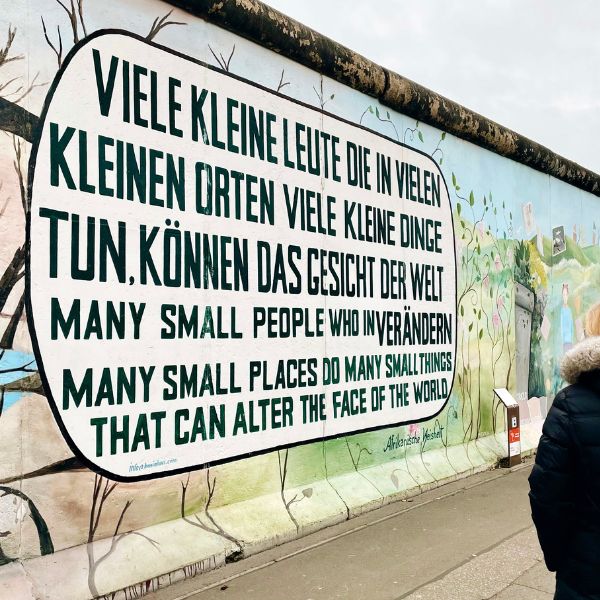
Walls of Fame
High above the Tauber Valley and away from the hustle of Nuremberg and Stuttgart lies the Red Castle above the Tauber, better known as, Rothenburg ob der Tauber.
Germany’s best-preserved walled town was not without conflict. Despite near-total devastation via the Thirty Years’ War and World War II, Rothenburg keeps rising from the ashes while holding on to its early ancient beginnings.
Those beginnings stretch back to the 9th century, when it was known as Rotinbure. These days, the winding streets are still lined with half-timbered houses and Gothic architecture.
Fully embracing the Gothic is St. Jacob’s Church, located just down from the main square.
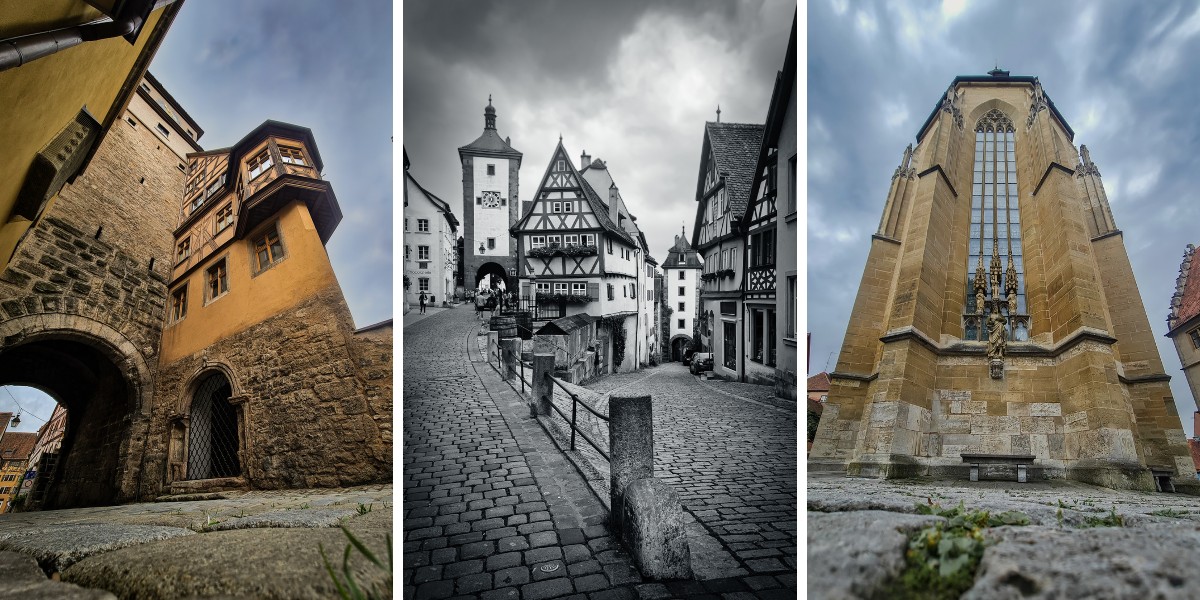 It may be the 21st century, but it's still very medieval.
It may be the 21st century, but it's still very medieval.Inside the church is quite possibly one of Germany’s most impressive displays of woodcarving craftsmanship - the Holy Blood Altar.
What Beethoven was to music, Tilman Riemenschneider was to carving. Tilman spent four years carving his masterpiece, which holds a relic said to contain a sample of Christ’s blood.
Though, perhaps Rothenburg’s most famous postcard moment in this idyllic German town is the Plönlein. One of the oldest houses in Rothenburg sits on a fork in the road flanked by two towers and was the inspiration for Walt Disney’s classic “Pinocchio” (1940).
Surrounding this and the rest are the well-preserved town walls. They wrap around the town by some 2.5 miles and are peppered with forty-two towers along the way.
Walkways along the wall offer impressive views of both the town and the Tauber Valley in the distance. For a knowledgeable dose of the historical sites, a guided walking tour is recommended.
Rothenburg should be at the top of anyone’s must-see list and one of the best places for a solid visual dose of famous architecture in Germany.
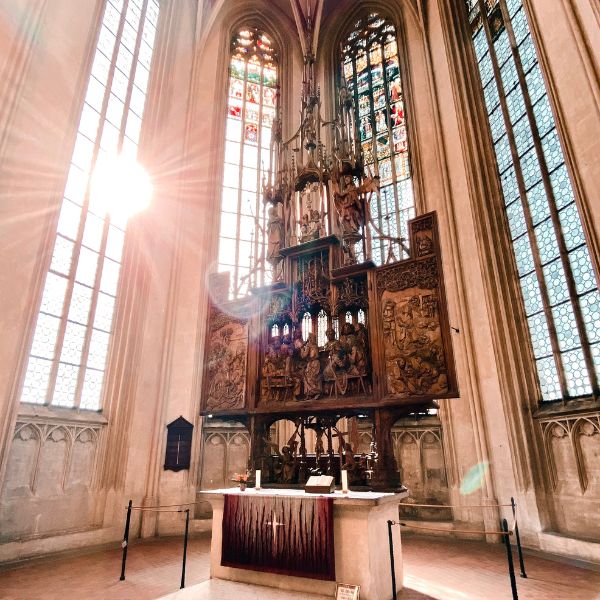 Guessing Riemenschneider was paid by the hour for his carving.
Guessing Riemenschneider was paid by the hour for his carving.That Tower Again
The Berlin TV Tower’s official Instagram hashtag (#thattoweragain) may sound a little despondent, but there’s nothing low-key about the tower itself.
All 1,207 feet of steel and concrete stand as a towering legacy of the Cold War’s GDR government in the city center.
Fun fact
When the sun hits the sphere just right, there is a glowing cross on the panels. It was seen as divine retaliation for the Cold War government removing crosses from churches in East Berlin and soon became known as “The Pope’s Revenge”.
Its sphere was designed to mimic the Russian Sputnik satellite and has a panoramic restaurant at 679 feet above the ground.
The literally named Sphere Restaurant is the highest restaurant in Berlin.
After taking thirty minutes to do a full revolution, you will be back to where you started before you finish your appetizers. Though your food will have a journey of its own before getting to the table.
For safety reasons, the kitchen is located at the base of the tower and goes up in its own special elevator.
The Berlin TV Tower is more than fifty years old, stands as the tallest building in Germany and the third tallest in the European Union.
The tower also resides in good company. Along with the Burj Khalifa, the Eiffel Tower, and the Empire State Building, it is a member of the World Federation of Great Towers (yeah, that’s a thing).
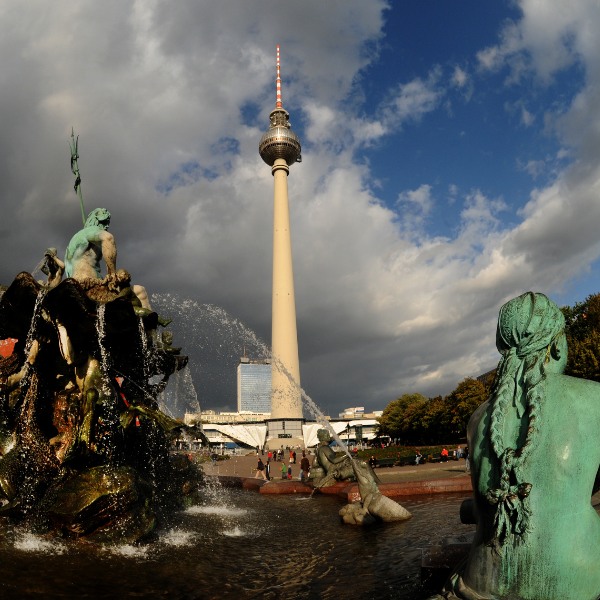 #thattoweragain
#thattoweragainBridge the Gap
Nestled among the green forests and natural red sandstone cliffs just outside Dresden is a mesmerizing landmark of famous architecture in Germany.
The GPS-busting name of the national park, Saxon Switzerland, is nowhere near Switzerland, but most definitely in Saxony.
It was named so by early explorers who, longing for home, found a resemblance in the landscape to Switzerland. And like a fly between a window and a swatter, the name stuck around.
interesting fact
The Bastei Bridge was featured in the very first landscape photograph, taken by Hermann Krone in 1853.
The park itself is notable for numerous reasons I won’t delve into here (as I’ve already covered elsewhere).
However, within the park is one of the more unique bridges you’ll ever come across. The Bastei Bridge spans the massive gaps between sandstone monoliths, rising up over 700 feet.
Originally constructed out of wood in 1824, the 246-foot bridge was later replaced with the current sandstone version in 1851.
The Bastei Bridge offers unparalleled views of the Elbe River drifting off towards the forested table mountains and is a popular tourist destination.
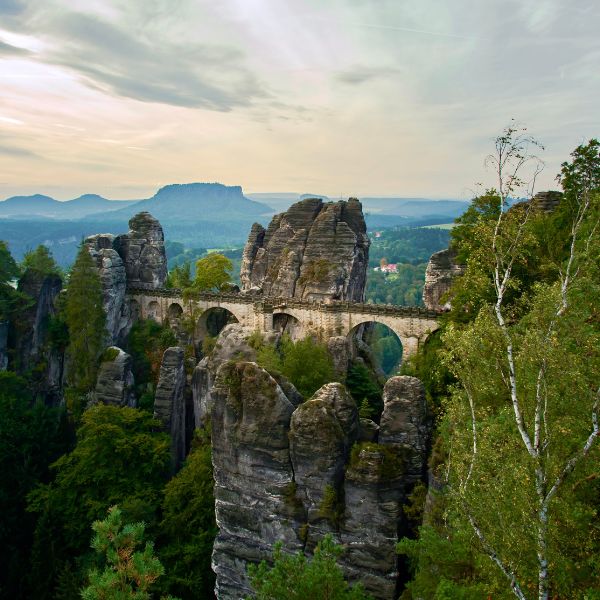
Now That’s a Bit Much
When someone you know has a baby, you might get a card or a noisy toy that definitely won’t annoy the new parents.
That is, unless you’re the heir to Bavarian Elector Ferdinand Maria and his wife, Henriette Adelaide of Savoy, in the 17th century. Then you're gifted one of the most famous architecture in Germany.
To celebrate the birth of their son, Max Emanuel, they constructed one of the largest palaces in Europe. Nymphenburg Palace is adorned with Baroque, Rococo, and Neo-Classical architecture and is undoubtedly one of the most opulent landmarks in Munich.
The palace was largely completed in 1679 but would later be significantly expanded by Max Emanuel and later rulers.
The interior eventually evolved into a high Baroque style, with its sights set on challenging the Versailles Palace in France. Though a view of which was the better palace is subjective, there is no denying the grand opulence that German royalty exuded from every one of its many rooms.
Outside the palace, the grounds are as impressive as the inside. The garden design is as much a work of art as it is a pristine, articulated green space with impressive water features.
The palace and gardens are laid out on a 180-hectare complex and combine to be the second-largest green space in Munich. Wildlife is also prevalent throughout the park, with residents including deer, beavers, kingfishers, geese, and tawny owls.
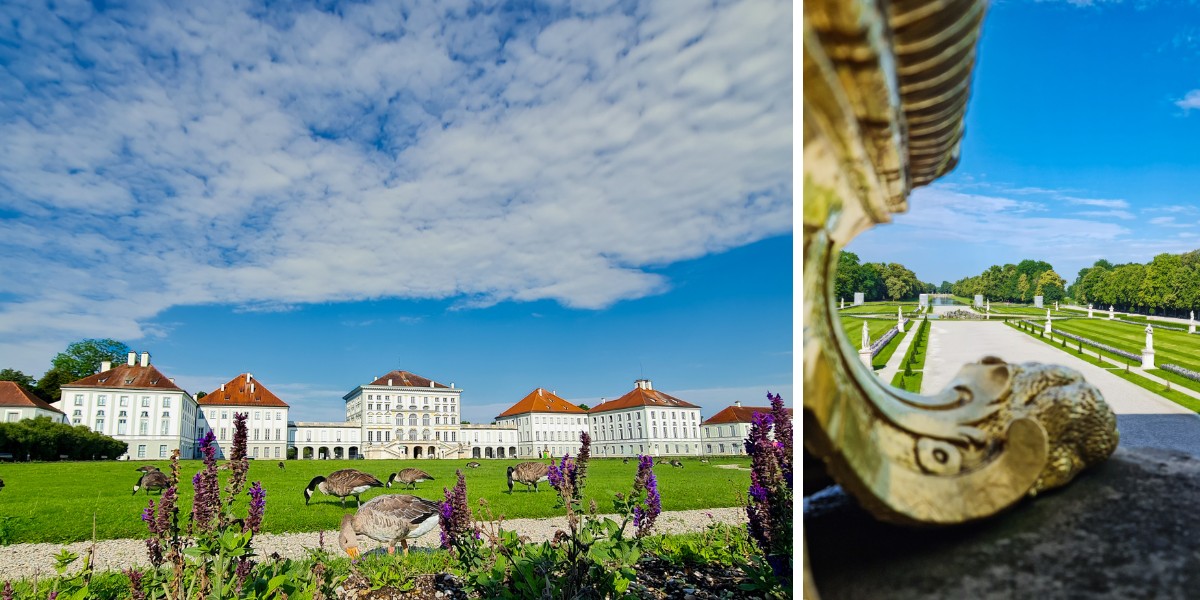 We met a few Canadian visitors during our summer tour.
We met a few Canadian visitors during our summer tour.School’s Out
Much of the most famous architecture in Germany, like any other country, draws influence from outside its own borders. Whether that comes from different architectural styles or a desire to surpass the likes of France and Italy for design prowess.
That said, high-level, homegrown talent is something Germany has been producing for years.
Starting with Ludwig Mies van der Rohe (1883 - 1969), who is highly regarded as a pioneering master and patriarch of modern architecture. He was the last director of the Bauhaus, a groundbreaking school of architectural education that was later shut down when the Nazis rose to power.
His design style focused on the use of industrial steel and plate glass to define interior spaces for an unobstructed open space. Often associated with his fondness for the aphorisms, “God is in the details.” and “Less is more.”
Seemingly joined at the hip with van der Rohe was Walter Gropius (1883 - 1969) who was widely regarded in his own right as a pioneering master of modernist design. He was the founder of Bauhaus in Weimar (1919) with the underlying idea behind the movement is that functionality dictates form, and there is no denying that over-complication is not very German.
Together with van der Rohe, they also established Weissenhof Estate in Stuttgart - later becoming a UNESCO World Heritage Site. The estate was a proof-of-concept for a new wave of building technologies and practices which spread around the world and are still in use today.
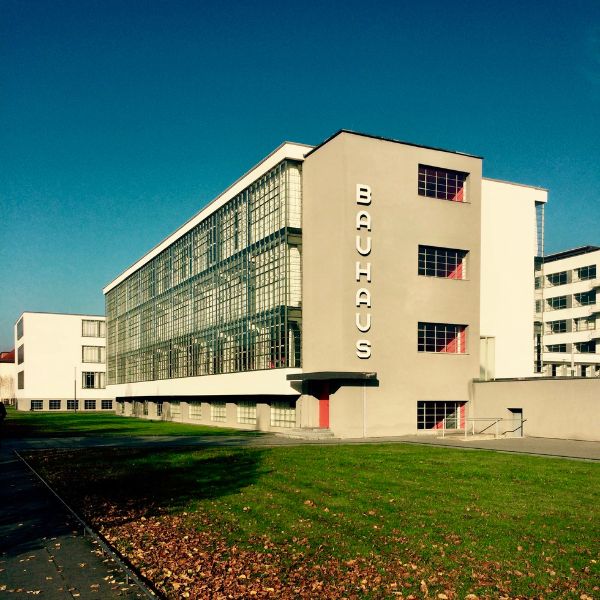
Consensus
Given the impressive nature of famous architecture in Germany, there’s not much more I can really add to persuade one that it more than holds up against any other nation over the past millennia.
And that comes with essentially rebuilding history after WWII, all while keeping in lockstep with the original as the physical scars of conflict continue to fade.
Innovation and rebirth have always been strengths of Germany, and its contributions to both domestic and global populations are undeniable. Although, the only way to experience the very best of Germany is just a flight away.



























